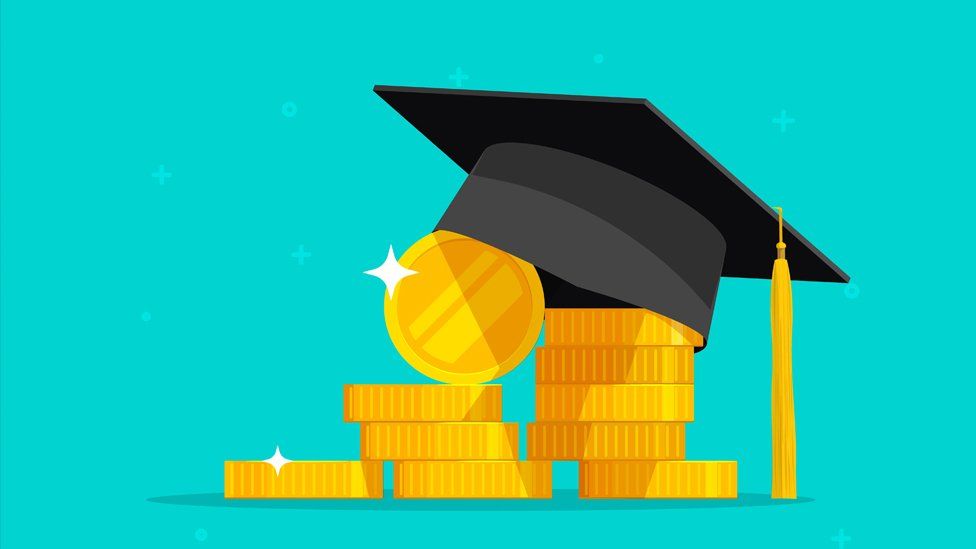The Student Loan Dilemma: Navigating the Complexities of Higher Education Financing
4 min read
Are student loans worth it
In today’s society, the pursuit of higher education is often synonymous with taking on student loans. These financial instruments have become both a lifeline and a burden for millions of students worldwide. As tuition costs continue to soar and financial aid fails to keep pace, the question looms larger than ever: Are student loans worth it? This article embarks on an extensive exploration of the multifaceted nature of student loans, dissecting their benefits, drawbacks, and broader implications for individuals and society.
The Value Proposition of Higher Education:
At its core, education is hailed as the great equalizer, offering a pathway to upward mobility and socioeconomic advancement. Research consistently underscores the positive correlation between higher levels of education and increased earning potential over one’s lifetime. Student loans play a crucial role in facilitating access to this transformative experience, enabling individuals to invest in their future by acquiring the knowledge, skills, and credentials necessary to succeed in today’s knowledge-based economy.
Access and Equity:
One of the most compelling arguments in favor of student loans is their role in expanding access to higher education, particularly for historically marginalized and underrepresented communities. For many aspiring students from low-income backgrounds, loans represent the means to break free from the cycle of poverty and pursue opportunities that would otherwise be out of reach. By democratizing access to education, student loans contribute to fostering diversity, equity, and inclusion in institutions of higher learning and the workforce at large.
Investment in Human Capital:
Beyond the immediate financial returns, education serves as an investment in human capital with far-reaching implications for individual and societal well-being. By equipping individuals with critical thinking skills, technical expertise, and a broader understanding of the world, education enhances productivity, innovation, and social cohesion. In essence, student loans facilitate the cultivation of a skilled workforce capable of driving economic growth, fostering social progress, and addressing pressing challenges in diverse fields ranging from healthcare to renewable energy.
The Burden of Debt:
However, the promise of higher education often comes with a significant price tag attached. The exponential rise in college tuition costs, coupled with stagnant wages and diminishing government support, has led to an unprecedented surge in student debt. Graduates enter the workforce burdened by tens of thousands of dollars in loans, which can have profound implications for their financial well-being and life choices. High monthly payments, compounded by accruing interest, may delay milestones such as homeownership, marriage, and retirement savings, perpetuating a cycle of economic insecurity and intergenerational wealth disparities.
Risk and Return:
Critics of student loans argue that the return on investment is not guaranteed and can vary widely depending on factors such as choice of major, institution attended, and prevailing market conditions. While STEM fields and professional degrees often command higher salaries and better job prospects, graduates in humanities and liberal arts may struggle to secure lucrative employment opportunities commensurate with their educational investment. Moreover, economic downturns and structural shifts in the labor market can further exacerbate the financial risks associated with student debt, leaving many borrowers vulnerable to default and financial distress.
Policy Dilemmas and Solutions:
The student loan crisis has prompted calls for policy reforms aimed at alleviating the burden of debt and making higher education more affordable and accessible for all. Proposals range from lowering interest rates and expanding loan forgiveness programs to implementing tuition-free college initiatives and enhancing financial literacy education. However, crafting effective policy solutions requires navigating a complex landscape of competing interests, fiscal constraints, and ideological divides. Moreover, addressing the root causes of rising college costs and stagnant wages necessitates a broader reimagining of our education system and economic priorities.
Alternative Pathways and Innovations:
In recent years, alternatives to traditional higher education, such as vocational training programs, online courses, and apprenticeships, have gained traction as viable pathways to gainful employment. These alternative models often offer more affordable tuition, flexible schedules, and direct pathways to in-demand careers in sectors such as healthcare, information technology, and skilled trades. Furthermore, advancements in technology and pedagogy have opened new possibilities for lifelong learning and skills development, enabling individuals to acquire relevant competencies without incurring significant debt.
Conclusion:
In conclusion, the question of whether student loans are worth it defies a simplistic answer and requires a nuanced understanding of their costs, benefits, and broader implications. While student loans have undoubtedly expanded access to higher education and facilitated individual advancement, they also carry significant financial risks and social consequences. As we grapple with the complexities of the student loan dilemma, it is imperative to pursue policy solutions that strike a balance between promoting access, mitigating debt burdens, and fostering economic opportunity for all. Ultimately, the true worth of student loans lies not only in their economic returns but also in their capacity to empower individuals, enrich communities, and advance the collective pursuit of knowledge and prosperity.



